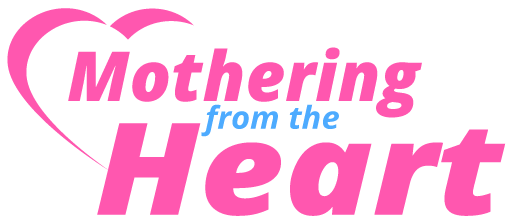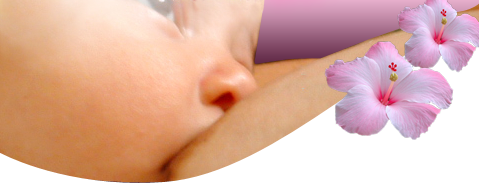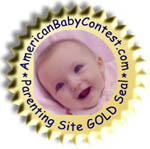“Latching On” Problems
When latching – How to Latch A Baby On To Breastfeed
Anne J Barnes , May 1995
Have nipple and baby’s nostrils in line before latching.
Baby held around shoulders.
Head supported but NOT pushed in against breast.
Head tilted back slightly.
Baby’s body and legs wrapped in around mother.
Push with base of hand on baby’s back and shoulders when MOUTH WIDE OPEN to move baby quickly onto breast, so chin and lower jaw touch breast first.
WATCH LOWER LIP, aim it as far from base of nipple as possible, so tongue draws LOTS OF BREAST in mouth.
Move baby’s body and head together, keep uncurled.
Once latched, top lip will be close to nipple, areola shows above lip. Keep chin close against breast.
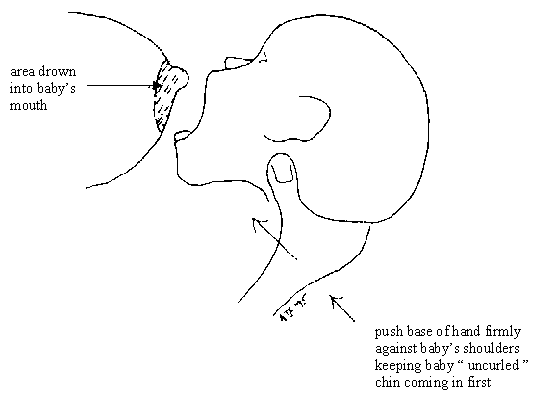
WIDE MOUTH / GAPE
Need MOUTH WIDE BEFORE baby moved onto breast.
Teach baby to open wide/gape :
move baby toward breast, touch top lip against nipple
move mouth away SLIGHTLY
touch top lip against nipple again, move away again
REPEAT UNTIL BABY OPENS WIDE and has tongue forward
MOTHER’S VIEW WHILE LATCHING BABY
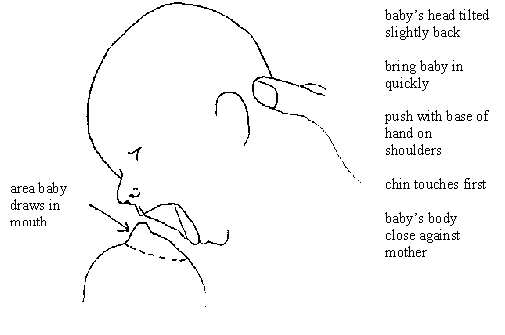
MOTHER’S VIEW OF NURSING BABY
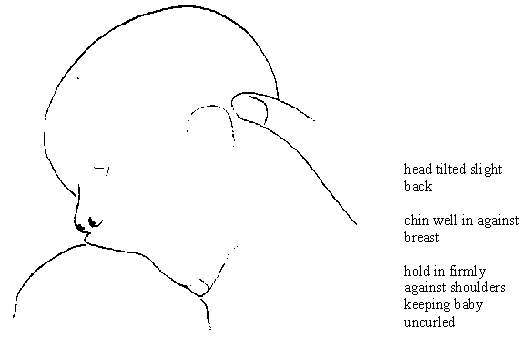
RECOMMANDATIONS FOR THE MOTHER
Mother’s posture
sit with straight, well-supported back
trunk facing forwards, lap flat
Baby’s position before feed begins
on pillow, nostril (not mouth) in line with nipple
Baby’s body
placed not quite tummy to tummy, but so that baby comes up to breast from below and baby’s upper eye makes eye contact with mother’s
Support breast
and firm inner breast tissue by raising breast slightly with fingers placed flat on chest wall and thumb pointing up (if helpful, also use sling of tensor bandage aroud breast)
Entice baby to gape
baby’s head and shoulders supported so head extends slightly as baby moved to breast
touch baby’s top lip to nipple and move baby away slightly and repeat until baby opens wide with tongue forward
Move baby quickly on to breast
head tilted back slightly, pushing in across shoulders so chin and lower jaw make first contact (not nose) while mouth still wide open, keep baby uncurled (means tongue nearer breast)
lower lip is aimed as far from nipple as possible so baby’s tongue draws in maximum amout of breast tissue
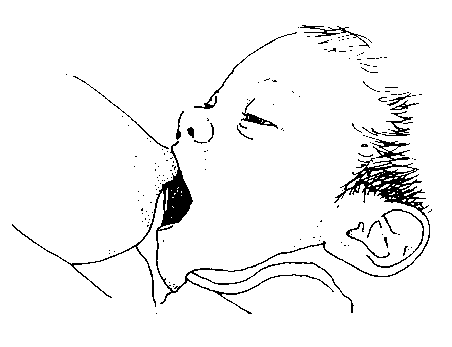
Cautions
Mother needs to avoid:
- pushing her breast across her body
- chasing the baby with her breast
- flapping the breast up and down
- holding breast with scissor grip
- not supporting breast
- twisting her body towards the baby instead of slightly away
- aiming nipple to center of baby’s mouth
- pulling baby’s chin down to open mouth
- flexing baby’s head as is brought to breast
- moving breast into baby’s mouth instead of bringing baby to breast
- moving baby onto breast without a proper gape
- not moving baby onto breast quickly enough at height of gape
- having baby’s nose touch breast first and not the chin
- holding breast away for baby’s nose
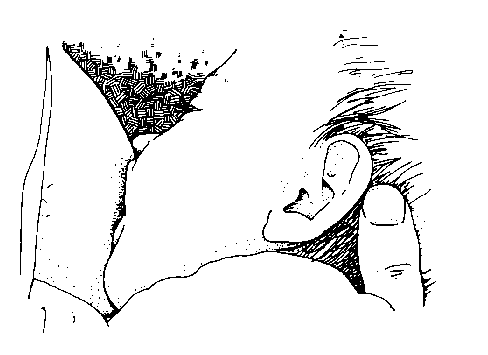
From : Breastfeeding : getting breastfeeding right for you
M Renfrew, C Fisher, S Arms
Index of Dr. Jack Newman’s articles
